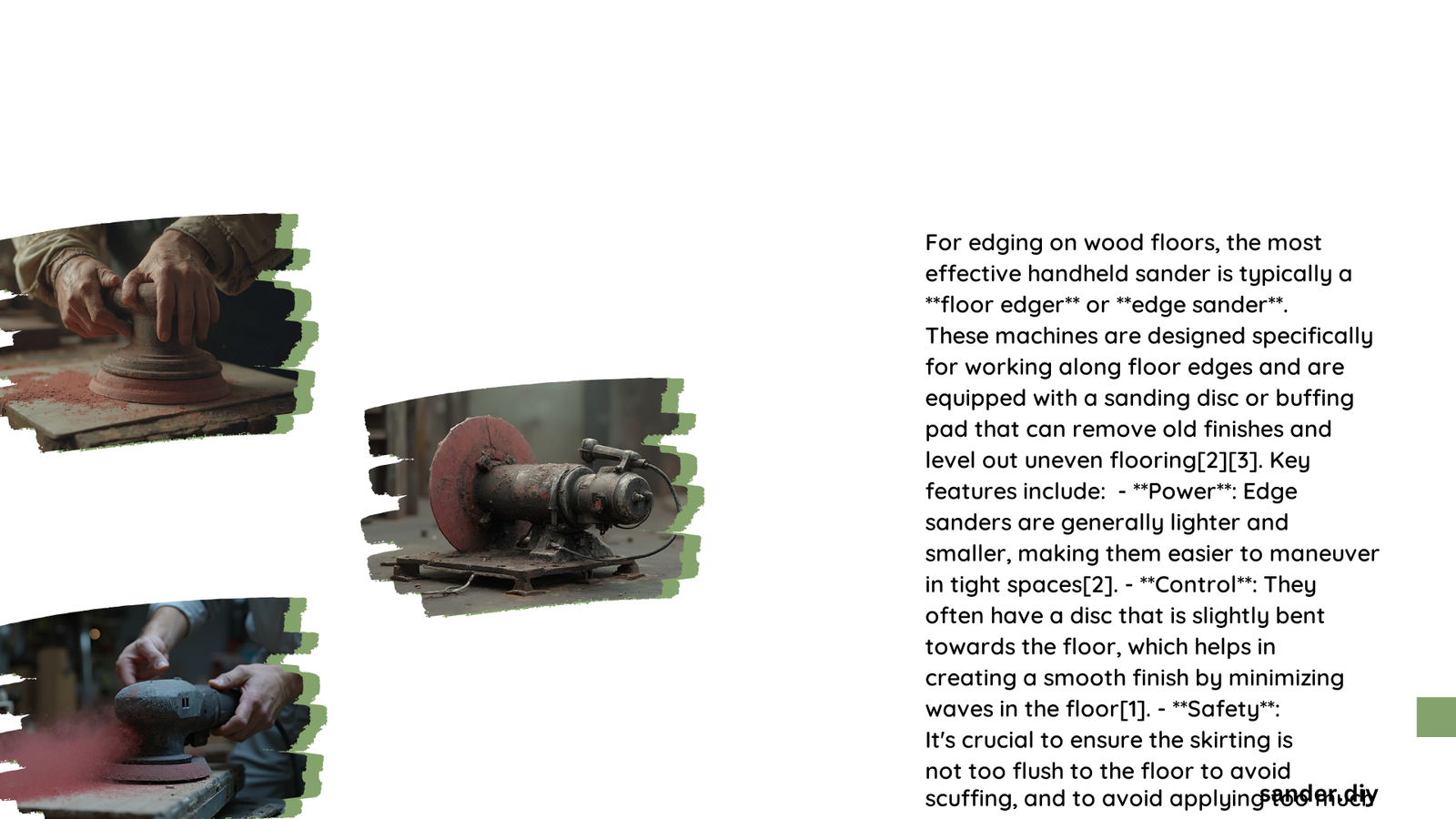For edging on wood floors, specialized edge sanders or versatile tools like the Festool Rotex are most effective. These handheld sanders are designed to reach tight spaces and corners, providing smooth finishes along floor edges. Dedicated edge sanders like the Black and Decker ‘Mouse’ offer compact designs for precise edging, while versatile options like the Festool Rotex combine power with maneuverability for various sanding tasks, including edging.
What Are the Top Handheld Sanders for Wood Floor Edging?
When it comes to edging wood floors, certain handheld sanders stand out for their effectiveness and ease of use. Let’s explore the top options:
1. Festool Rotex
The Festool Rotex is a versatile tool that excels in edge sanding:
- Power Rating: 720 Watts
- Weight: Approximately 5.5 lbs (2.5 kg)
- Sanding Pad Size: Various sizes available, 150mm (5.9 inches) common for edges
- RPM: Up to 420 RPM in rotary mode, 2600-3600 oscillations per minute in orbital mode
- Unique Features:
- Geared orbital setting combining oscillation and rotation
- Compatible with Festool’s efficient dust extraction system
2. Black and Decker Edge Sander (‘The Mouse’)
Designed specifically for edging, this compact sander offers:
- Power Rating: Typically 2-3 amps (240-360 watts)
- Weight: Lightweight, around 3-4 lbs (1.4-1.8 kg)
- Sanding Pad Size: Usually 3-4 inches (7.6-10.2 cm) in diameter
- RPM: Range of 10,000-15,000 RPM
- Unique Features:
- Small, maneuverable design for tight spaces
- Often includes a dust collection bag
Why Choose Cordless Sanders for Floor Edging?

Cordless sanders offer several advantages for floor edging:
- Increased Mobility: No power cord restrictions
- Ease of Use: Better maneuverability in tight spaces
- Versatility: Can be used in areas without power outlets
However, consider battery life and charging time:
- Battery Life: Typically 30-60 minutes depending on usage and battery type
- Charging Time: Usually 30 minutes to 1 hour for high-capacity batteries
How Do Handheld Orbital Sanders Compare to Other Types?
| Sander Type | Sanding Pattern | Ease of Use in Tight Spaces | Aggressiveness |
|---|---|---|---|
| Orbital | Circular | Excellent | Low to Medium |
| Drum | Linear | Poor | High |
| Belt | Linear | Fair | High |
Handheld Orbital Sanders
- Pros:
- Ideal for fine finishing
- Highly maneuverable in tight spaces
- Cons:
- Less aggressive, may take longer for heavy sanding
- Can be tiring for extended use
Drum and Belt Sanders
- Pros:
- Fast and aggressive for removing old finishes
- Efficient for large floor areas
- Cons:
- Difficult to maneuver in tight spaces
- Not suitable for delicate edging work
What Are the Key Factors in Choosing an Edge Sander?
When selecting a handheld sander for wood floor edging, consider:
- Size and Weight: Smaller, lighter sanders are easier to maneuver along edges
- Power: Higher wattage or amp ratings generally indicate more sanding power
- Dust Collection: Efficient dust collection systems improve air quality and cleanup
- Versatility: Some sanders, like the Festool Rotex, offer multiple sanding modes
- Corded vs. Cordless: Weigh the convenience of cordless against potential battery life limitations
How to Achieve the Best Results with Edge Sanders?
To get optimal results when edging wood floors:
- Start with coarser grit sandpaper and progressively move to finer grits
- Move the sander slowly and steadily along the edge
- Keep the sander flat against the floor to avoid creating divots
- Use a dust mask and eye protection for safety
- Clean the area thoroughly between grit changes
- Consider using a detail sander for extremely tight corners
By following these tips and choosing the right handheld sander, you can achieve professional-quality edging on your wood floors.
References:
- https://dohire.com/blog/floor-sander-best-use/
- https://www.thespruce.com/floor-sanders-to-rent-1821643
- https://howtosandafloor.com/sanding-hardwood-floors-by-hand/
